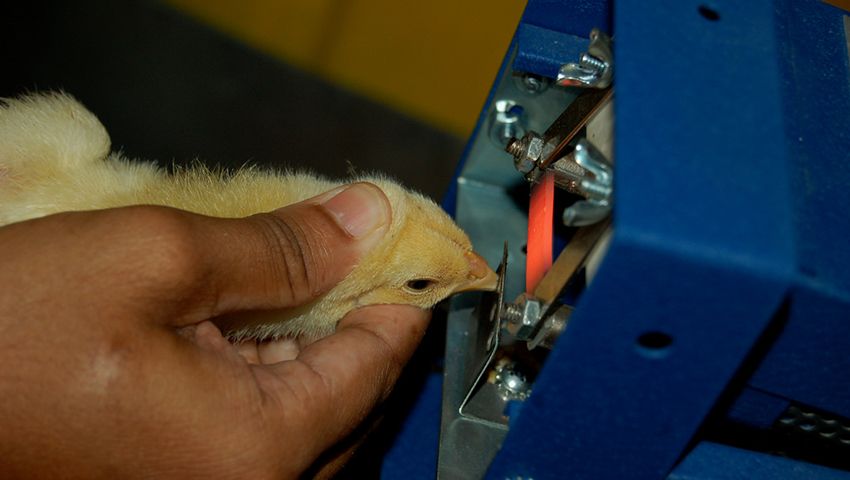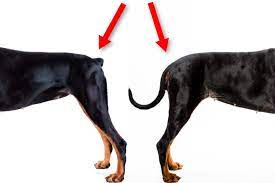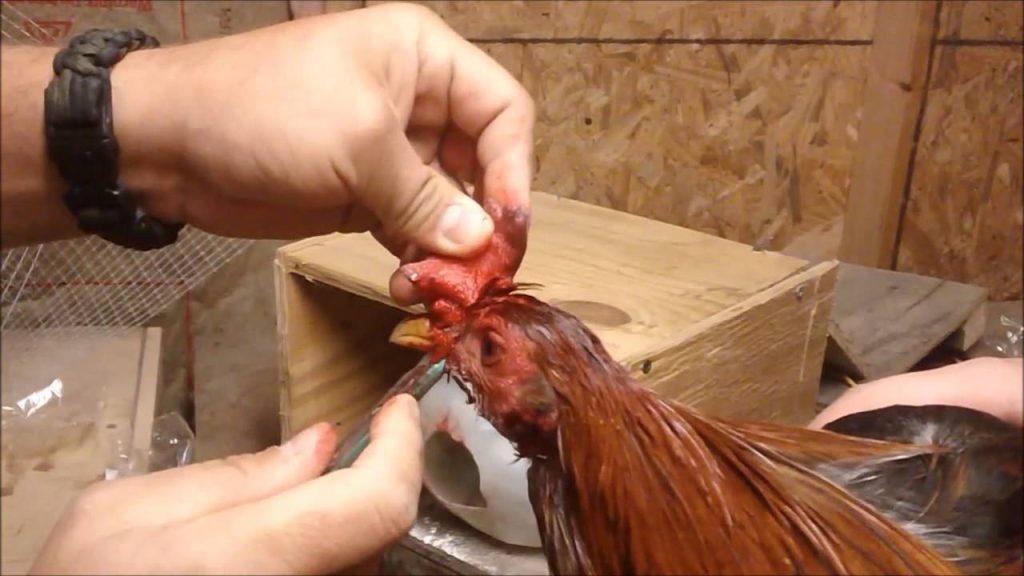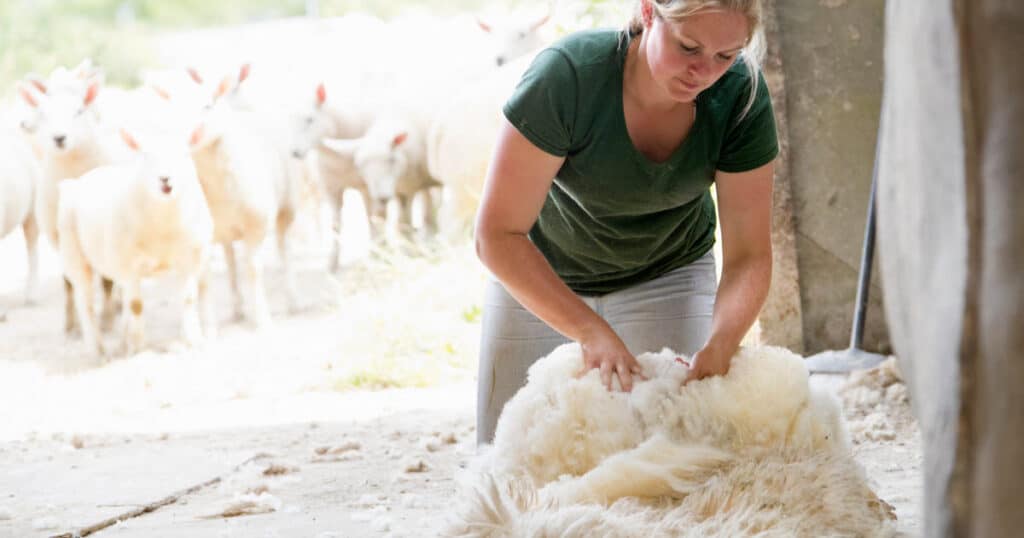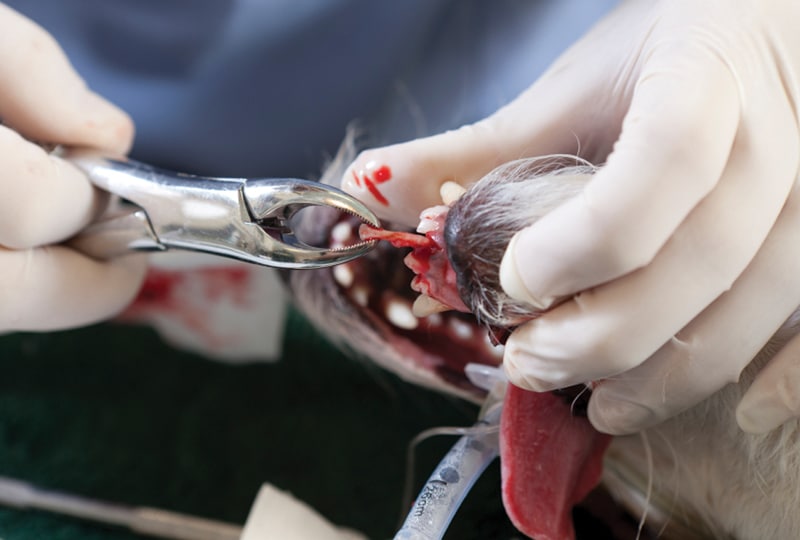There are different types of livestock management, but in commercial production, the intensive system is the most practiced.
In an intensive system, there are routine management practices in livestock production to increase productivity and improve profitability.
Common Farm Management Practices
The following are the common routine management practices in farm animals.
The importance of these livestock management practices can not be over-emphasized.
Debeaking
Debeaking is the act of cutting the beak of a chicken to prevent cannibalism (pecking) as well as egg-eating.
There are different methods of debeaking: Manual, Tool, and chemical (cream).
Manual debeaking is done by using scissors or cutting knives, and you can use an electric debeaker in mass production.
The cutting knife and electric debeaker usually cut and simultaneously cauterized the cut surface of the beak.
Debeaking involves cutting back about 2/3 of the upper beak of the adult or 1/3 of the lower and upper beak of the young chicken.
Debeaking age in poultry is between 1 week to 4 weeks, and the operation is carried out either in the morning or at night to prevent bleeding.
Breeding and restlessness are the major disadvantages of debeaking, and you can prevent this if the debeaking process is handled by experts.
Egg collection
Eggs are usually collected regularly in the laying houses where matured pullets or hens are kept.
When hens are kept in cages, the collection is done twice or thrice daily (morning, afternoon, and evening).
When they are kept on the floor, 3 to 4 times, the collection is one (morning, noon, afternoon, and evening).
Regular collection of eggs is done to prevent cracking as well as eating of eggs by birds.
There is an automatic egg collection system now, the egg collector machine can handle this task.
Birds are also prevented from sitting on their egg ( brooding). Birds usually brood on eggs in laying nests.
Egg baskets or egg trays are used for egg collection.
Tail Docking
Tail docking or tailing is the practice of cutting the tail of an animal.
Tail docking is common in sheep, and sometimes in dogs and cattle.
The main advantage of tail docking is to prevent the animal from using it to smear soft-like feces on the valuable fleece (wool).
Docking is usually done when the animal is young. The tail is cut by using sharp scissors or shears leaving behind a short stub.
Dubbing
Dubbing is the act of cutting a comb usually during theater season to prevent freezing as a result of the pain from freezing.
Dubbing is also done where cannibalism is rapid or rampant. However, it’s not a common practice in tropical regions.
Dubbing also involves the removal of wattles (twattling) and earlobes in poultry.
Milking
Milking is the removal or collection of animal milk by man. Milking is done, in lactating dairy cows or many goats.
These animals can produce more milk than their young ones can consume.
The excess milk is collected through the hand or machine milking process for human consumption.
Milking is usually done in the morning or early hours of the evening.
The process of milking involves washing the header with lukewarm water.
The washing process and massaging of the header stimulate milk let-down.
After washing the tit, you press the tit to taste if the stage or quality of the milk is satisfactory, milking can be done by pressing the tit in an orderly manner.
Alternatively, a milking machine can be fixed to tit to milk the animal.
Wool shearing
Wool shearing is the removal of the fur in animals, especially sheep, as a raw material for making other items.
Shearing does not hurt your sheep if it’s done in the summer, with a safe shearing machine, and when the animal’s body is not too exposed to natural elements.
During the winter season, wool-type breeds of sheep or dogs usually develop a thick coat of fleece which are of great value for making winter coats and other valuables.
At the end of the winter season, this wool is cut from the body of the sheep or animals by using shears manually or another mechanical device. Similarly, some breeds for wool production.
Breeding
Breeding is a process of multiplying the herds (of animals) or flock population usually to maintain or improve the quality of the stock.
There are various methods of breeding. Some of these methods are listed below.
- In-Breeding
Inbreeding is the mating of animals that are closely related, for example, sister to brother, son to dam, and sire to daughter.
- Line-Breeding
This is a method of breeding that is usually done to conserve some good traits or outstanding sire for line-breeding, for example, the mating of the sire to its sisters, cousins, daughters, and granddaughters.
- Out-breeding
Out-breeding is the mating of animals that are not closely related, such animals do not have a common ancestor in the preceding 4 to 6 generations. the following system of breeding falls into out-breeding
- Outcrossing
- Grading-hock
- Crossbreeding
- Top crossing
Outcrossing is the crossing of unrelated animals with different traits within the same breed.
Grading-hock is the mating of a pure breed sire with an unimproved dam within the same breed with the primary aim of upgrading the dam.
Crossbreeding is the mating of animals of different breeds within the same species.
The top crossing is the mating of in-breed males with females that are not in-breed.
Method of mating
- Mass mating or herd mating
Flock mating: This is the mating between male animals kept together with the female animal.
Under this system of mating, there is no deliberate effort on the part of the farmer to control the mating processing of chicken.
Pen mating: This is the mating between one sire kept together with several dams, for example, in cattle, you can equally practice with chickens.
Stud or hand mating: This is a more organized system of mating. It involves the mating between one sire and one dam in a place, for example, pigs.
Artificial insemination: This is a scientific technique in which semen collected from a proven sire is artificially introduced into the female reproductive trait using an inseminator.
Teeth removal
Teeth extraction is common in dogs or canines. Tooth extraction is also carried out in cats and pigs.
In pigs and dogs, for example, the two types of teeth that are usually removed from pig mouths are; the needle teeth and the canine in adult pigs or dogs.
The needle teeth are the first set of incisors in the piglet’s mouth. They are usually pointed and sharp.
Often time, piglets and puppies have been found to cause injury with these teeth while sucking.
The teeth are therefore removed by clipping the tips of the pair of incisors with a small plier as soon as the teeth grow within the first week of life.
In adult pigs, especially boars, the canine often called tusk protruding from the mouth is clipped from the pigs to prevent them from injuring themselves when frightening or injuring the farmer when handling. The appearance of the tusk makes them ugly.
Dog tooth extraction would not have complications if done by a professional dog surgeon, and when the dog is under anesthetic.
There should also be an assessment to know exactly how the tooth extraction would be done before the





